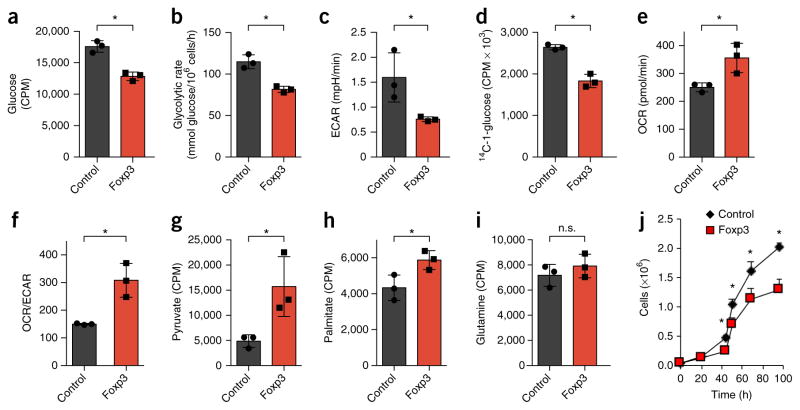Figure 4.
Foxp3 expression is sufficient to suppress glycolysis and promote oxidative metabolism. (a–i) Glucose uptake (a), glycolytic rate (assessed by a radiolabeled-glucose-tracer assay) (b), ECAR (c), flux of glucose into the pentose phosphate pathway (PPP) (d), OCR (e), OCR/ECAR (f), pyruvate oxidation (g), fatty-acid oxidation of palmitate (h) and glutamine oxidation (i) of vector-control-transduced FL5.12 pro-B cells or FL5.12 pro-B cells transduced with tamoxifen-inducible expression of Foxp3, treated with 4-hydroxytamoxifen. (j) Quantification of live cells as in a–i to assess cell accumulation over time. *P < 0.05 (two-tailed Student’s t test). Data are representative of three (a,b,j) or two (c–i) independent experiments with three independent clones per group (mean + s.d. in a–i or (mean ± s.d. in j).

